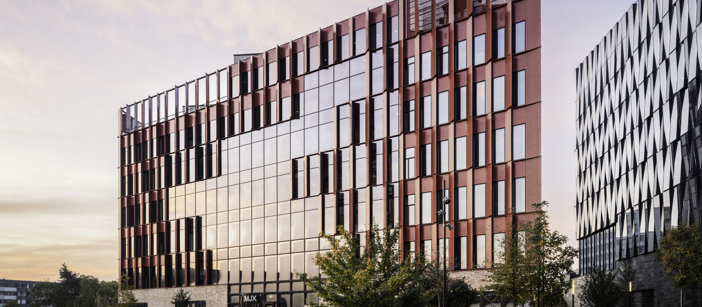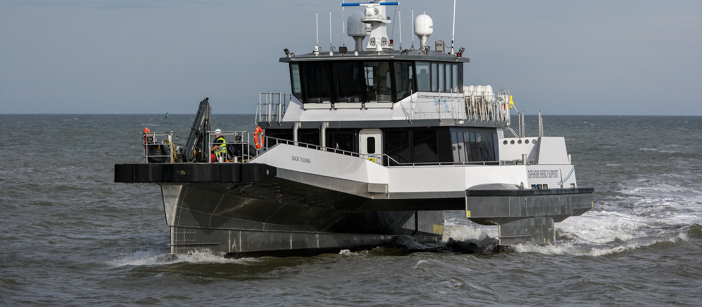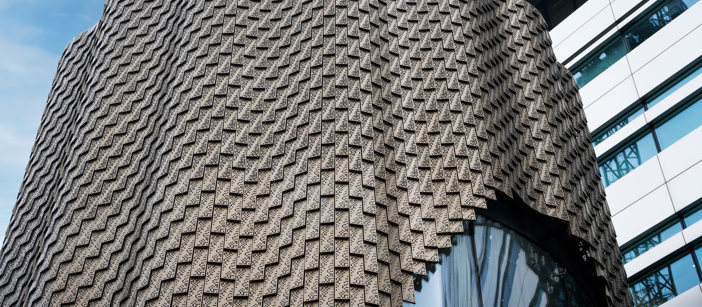
Publications
Experience our versatile rolled products in various application areas and immerse yourself in the aluminium world of Speira, where innovation, quality and sustainability are combined at the highest level.
Stay up to date with the Speira newsletter and receive our latest publications conveniently in your mailbox. Click here to subscribe to our newsletter.

Whitepaper Setting ourselves the highest standards for recycled aluminium

The recycling of aluminium plays a key role in the conservation of energy and the resulting reduction of emissions.
But how exactly do we define recycled aluminium?
Speira stands for true commitment and transparency when it comes to sustainability. That's why we follow a strict definition that leaves no room for interpretation, setting ourselves the highest standards.
In this white paper, you will learn how we define recycled aluminium and how we calculate the carbon footprint of our flat rolled aluminium products.
DownloadWhitepaper Aluminium’s role in the decarbonization of batteries

Critics of e-mobility often argue on the typically higher carbon emissions of electric vehicles and their batteries during production phase compared to petrol and diesel cars. But besides the fact that these are more than offset by lower emissions in the use phase of the car, the race to decarbonization of battery production has already started, pushing the sustainability of battery electric vehicles to the next level.
In this context, recent projections by McKinsey suggest that the carbon footprint of lithium-ion battery cell production will be reduced by more than 75% along the entire battery value chain between the years 2022 and 2030.
Our whitepaper on the decarbonization of batteries reveals that sustainable aluminium could play a major role for achieving this ambitious goal and presents pathways towards greener batteries by the adoption of low-carbon primary aluminium and recycling based material solutions on cell level.
DownloadWhitepaper Aluminium material solutions for battery cooling plates

An effective thermal management is a key factor for the efficiency and durability of battery systems in battery electric vehicles (BEV). Aluminum offers outstanding properties, such as high thermal conductivity, low weight, high formability, strength, and recyclability, which make it the material of choice for thermal management components.
Today, the dominating cooling solution is the use of brazed aluminium cooling plates due to their balance of efficiency and cost. A disadvantage of this concept is the inherent low strength of conventional heat exchanger materials after brazing. Speira has developed a new high strength brazing material, which combines a high mechanical strength after ageing with high formability, while it retains the typical benefits of conventional material solutions such as easy brazing and high corrosion resistance.
This white paper discusses the material requirements for brazed battery cooling plates and details Speira's material solutions.
DownloadWhitepaper Sustainable processes for producing aluminium beverage cans

Aluminium has excellent technical properties, is 100 % recyclable, has excellent thermal conductivity and is lightweight. The result is fully recyclable aluminium beverage cans that keep their contents cool, tasty and fresh on the long journey to the end consumer.
The volume of aluminium beverage cans used in Europe will increase by around ten billion over the next five years. Speira is part of this trend and is making an important contribution to this with its high-quality aluminium from the VERO product line. Aluminium with a recycled content of more than 75 % is labeled ORBIS. Recycling is also one of the services we are happy to provide in the interests of sustainability. We already recycle 100,000 tons of aluminium beverage cans every year.
Read our whitepaper to find out more about the production and recycling of aluminium for beverage cans.
DownloadWhitepaper Aluminium solutions for large façade elements

In the area of architecture and construction, our materials are exposed to a wide variety of weather conditions, which they have to withstand. At the same time, they must meet the highest demands in terms of appearance, form and sustainability.
Our TECTURA Giant sheets are the best choice for large dimensions of up to 2.6 meters. They are easy-to-form, so even demanding, more-dimensional façade elements can be realized. Alloy type, strength range and surface finish are tailormade for each project and developed in close cooperation with architects and façade builders. At the same time, our aluminium sheets have a low carbon footprint and contribute significantly to the energy efficiency of large buildings.
In this whitepaper, you will learn more about the use of aluminium in large-scale façade cladding. Discover the many benefits, different surface treatments, environmental aspects and specific project examples.
DownloadWhitepaper Aluminium solutions for sustainable shipbuilding

The yearning to explore lakes, seas and oceans and to travel by ship is something that has moved people from time immemorial. The ambition to do so as sustainably as possible and with greater awareness is growing stronger and stronger, however, and bringing together both commercial and private shipbuilders and seafarers. In this context, lower weight, long service life and high recyclability play decisive roles.
As one of the leading providers of material solutions in shipbuilding and transportation, we offer the right solution for an extremely wide range of requirements.
Our VIA Maris products withstand the elements and prove their value through efficient use, corrosion resistance and safety. Set sail with us and discover our cost-effective and sustainable aluminium solutions for shipbuilding.
DownloadWhitepaper Benefits of aluminium cell housings for cylindrical lithium-ion batteries

Aluminium is a highly versatile material providing a multiplicity of great properties, such as high thermal conductivity, lightweight, high formability, strength and recyclability, that are crucial for manufacturing of modern, high-energy lithium ion battery (LIB) cells. While industry takes advantage of these beneficial properties and uses aluminium as the standard material for prismatic and pouch LIB cell housings, the majority of cylindrical cell concepts is still based on nickel-plated steel (NPS). However, with increasing cell sizes, efficient thermal management of the battery cells becomes more important and aluminium cell housings can provide a technical superior solution for cylindrical cells compared to NPS.
This joint study between Speira GmbH and the chair of Production Engineering of E-Mobility Components (PEM) Aachen provides a 4680 cell concept featuring an aluminum cell housing based on a novel material solution for battery cell housings named Speira ION cell. The cell concept was challenged in different 3C fast-charging scenarios using thermal simulation. The simulations reveal significantly improved cooling performance compared to a reference LIB cell with commonly used NPS cell housing.
Download











